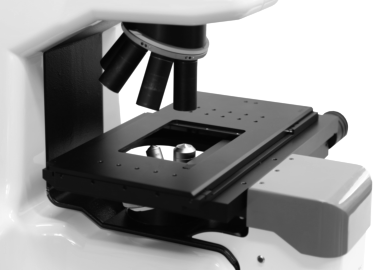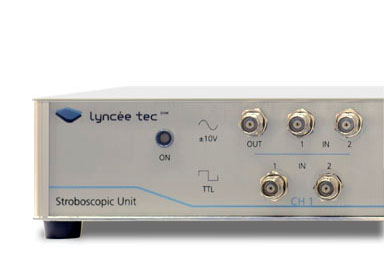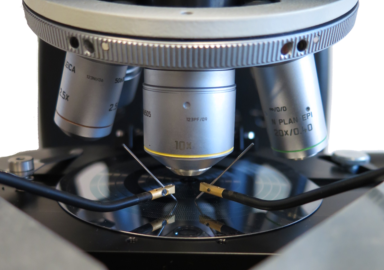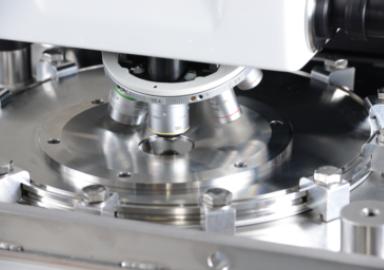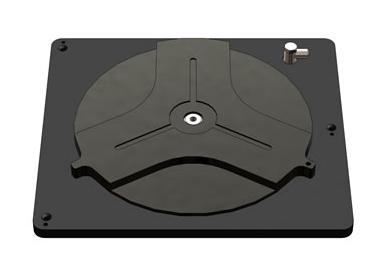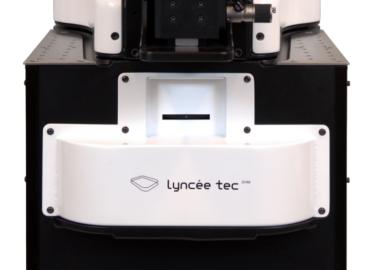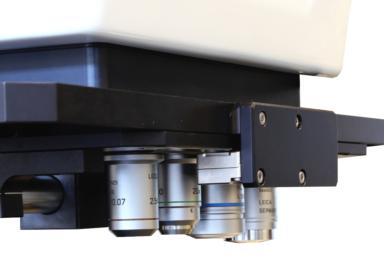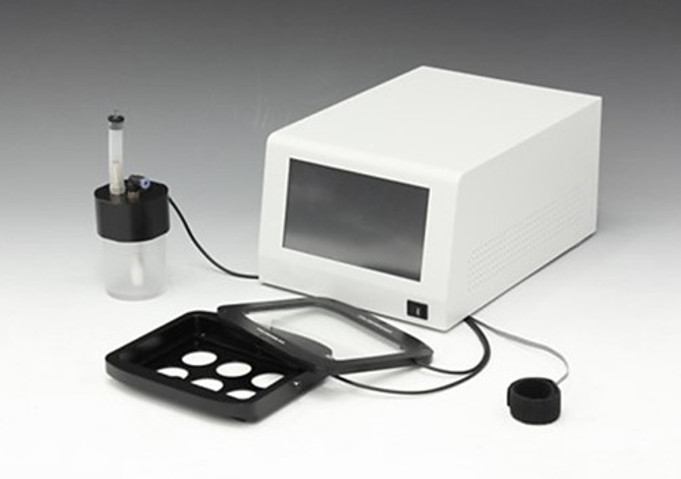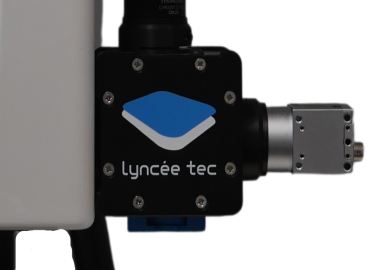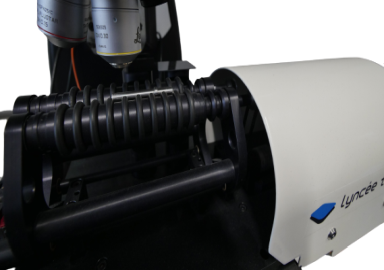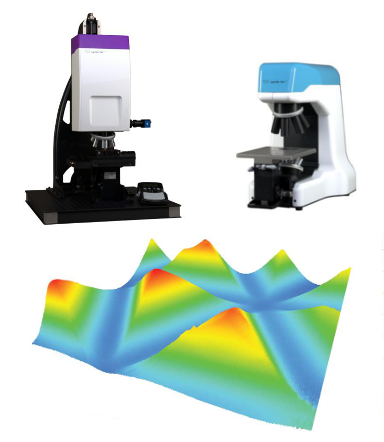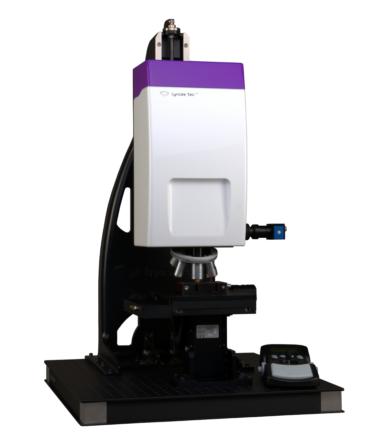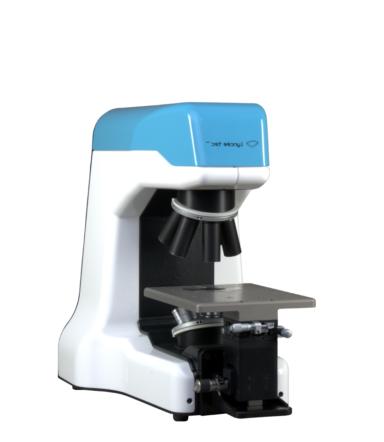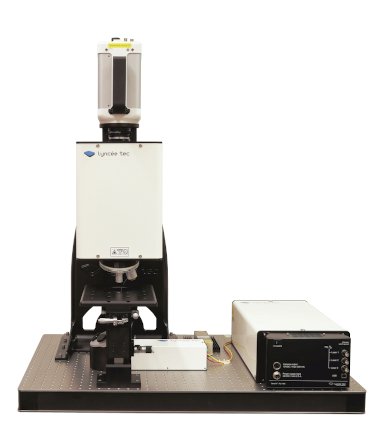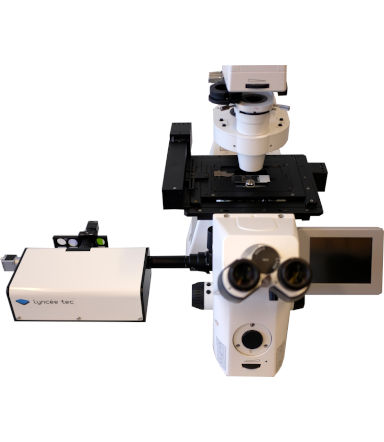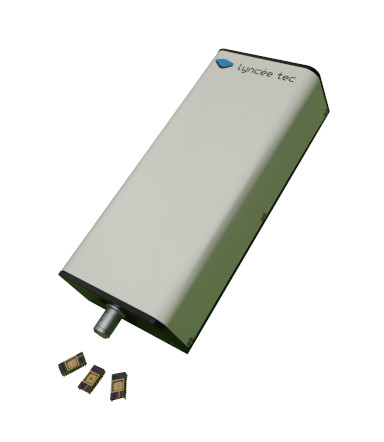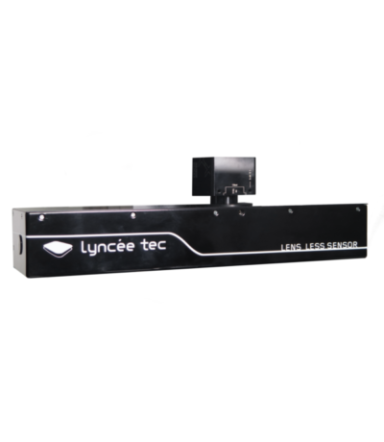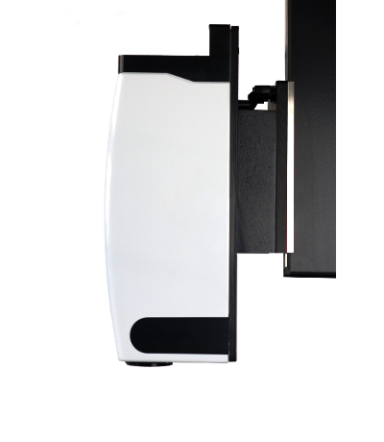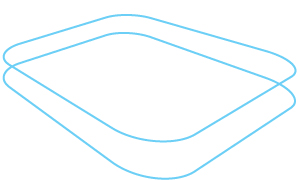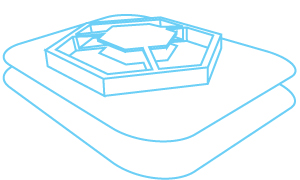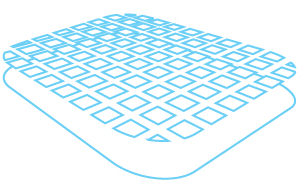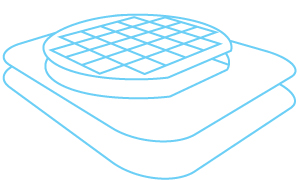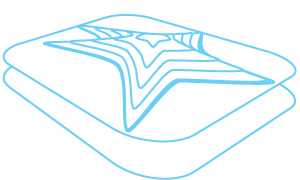Objectives
A large choice of objectives for measuring with optimal optical quality
Digital Holographic Microscopes (DHM®) have a unique optical configuration compared to classical interferometers: the reference path is not build-in the microscope objective but is integrated in the DHM® head. This enables DHM® to be used with a large range of objective types as conventional optical microscopes rather than to be limited by a limited choice of expensive interferometric Michelson or Mirau objectives. Therefore DHM® takes advantage of the multiple measurement possibilities offered with classical objectives.
- Magnification from 1.25x up to 100x with numerical apertures up to 0.90 in air and 1.4 in oil immersion
- Objectives optimized for simultaneous DHM® and fluorescence measurements
- Long working distance objectives to measure sample areas difficult to approach or in presence of interaction probes.
- Water and oil immersion objectives to measure immersed samples
- Objectives with correction for measuring through standard cover-slip, ideal for live cell measurements
- Objectives with correction for various glass window thickness, to measure in vacuum, inside microfludic systems, in environmental chambers, …
Four different sets of objectives, for covering all your needs with an optimal optical quality.
- Standard. This is the most widespread objective set choice, including long working distances, high NA and immersion objectives, covering the larger range of material and life sciences applications.
- Ultra Long Working Distance, (ULWD). Reserved to applications demanding very long working distance, in particular MEMS probing at high magnification
- Ultra High Numerical Aperture (UHNA). Limited to a choice of 4 magnifications (2.5x, 5x, 10x, and 20x). It is dedicated to application demanding simultaneously large field of view, high acceptance angle, and high lateral resolution. The main applications are rough samples and micro optical components.
- Life sciences. A full range of objective corrected for standard cover-glass thickness (0.17 mm) specialized for cellular imaging. Compatibility with the use of DHM® in conjunction with our fluorescence module.
The objective set selection chart on the left guides your choice.
Within a given set, objective selection criteria are identical to conventional optical microscopy. The objectives specification in term of magnification, field of view, lateral resolution (Numerical Aperture (NA)), maximum slope acceptance, working distance, are given for each sets of objectives in the related tabs at the top of this page.
Note that all the objectives within a same set have the same parafocal length, ensuring a constant focus without moving the sample when changing the objective. It is not possible to mount objectives from two different sets on a same DHM® system.
The objectives delivered are tested and selected for ensuring the best and optimal performances. They are factory adapted to the turret, calibrated and configured for an immediate use when a system is delivered.
Lyncée Tec experts will advise you on the best selection of objectives for your applications and samples.
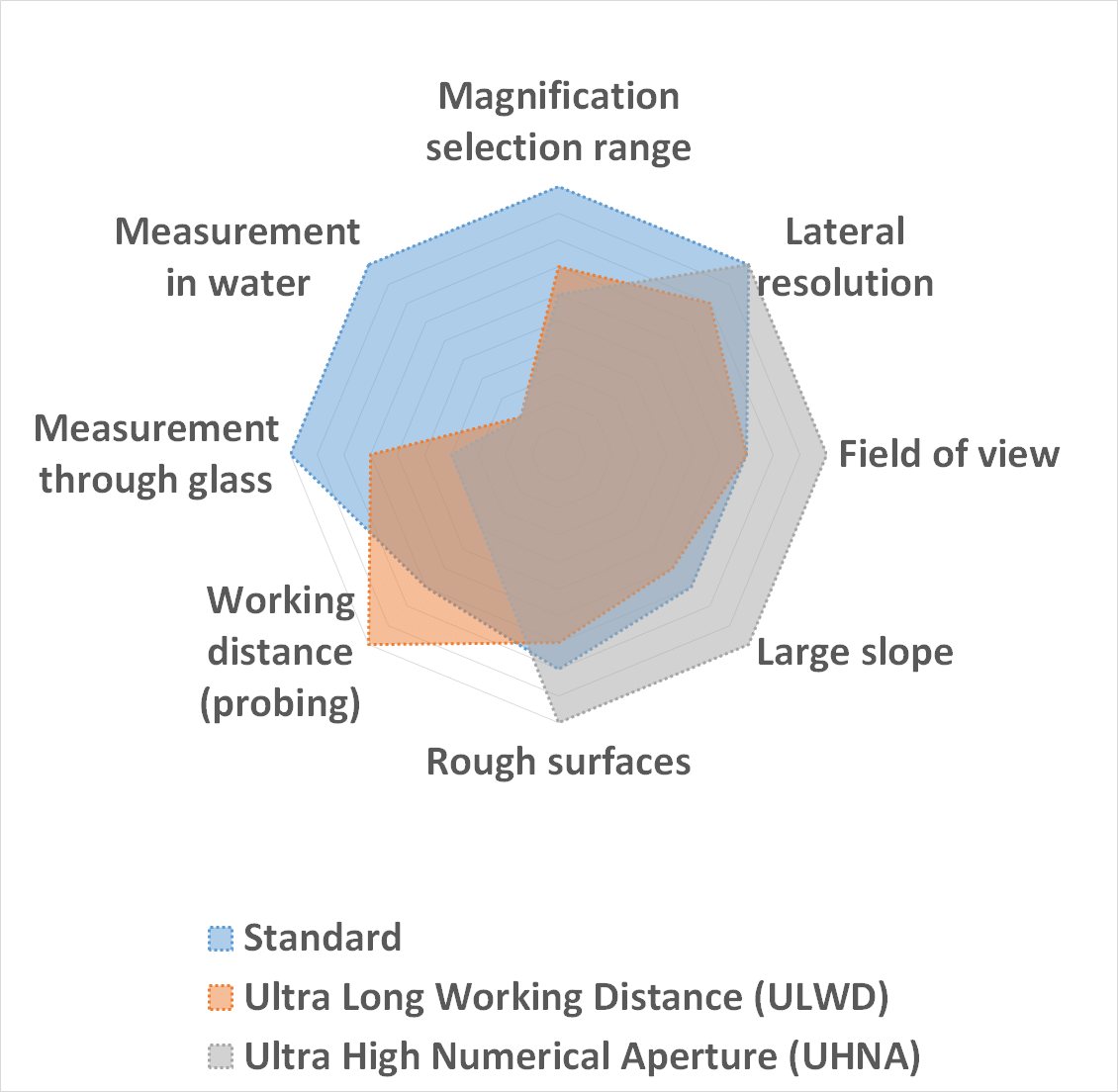
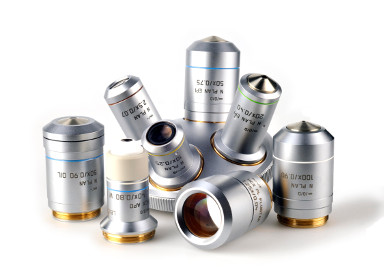
Standard set of objectives specifications
Specifications for the standard set of objectives are divided into the following types:
The list below is not exhaustive. Do not hesitate to ask Lyncée for other application needs.
Dry
| Magnification | Numerical aperture | Working distance [mm] | Glass thickness [mm] | Immersion | Field of View [um] (square) | Lateral resolution [um] | Depth of Field [um] | Maximum Slope [°] DHM®-R | Maximum Slope [°] DHM®-T |
|---|---|---|---|---|---|---|---|---|---|
| 1.25 | 0.04 | 3.70 | - | - | 5280 | 8.50 | 555 | 1.1 | 4.5 |
| 2.5 | 0.07 | 11.2 | - | - | 2640 | 4.90 | 175 | 2 | 7.9 |
| 5 | 0.12 | 14.0 | - | - | 1320 | 2.85 | 58 | 3.4 | 13.3 |
| 10 | 0.30 | 11.0 | - | - | 660 | 1.15 | 9.75 | 8.7 | 28.7 |
| 20 | 0.40 | 1.15 | . | . | 330 | 0.85 | 5.0 | 11.7 | 34.3 |
| 40 | 0.75 | 0.37 | - | - | 165 | 0.45 | 1.43 | 24.3 | 41.8 |
| 50 | 0.75 | 0.50 | - | - | 132 | 0.43 | 1.23 | 26.6 | 41.8 |
| 100 | 0.90 | 1.0 | - | - | 66 | 0.38 | 0.91 | 32.1 | 41.8 |
Long Working Distance
| Magnification | Numerical aperture | Working distance [mm] | Glass thickness [mm] | Immersion | Field of View [um] (square) | Lateral resolution [um] | Depth of Field [um] | Maximum Slope [°] DHM®-R | Maximum Slope [°] DHM®-T |
|---|---|---|---|---|---|---|---|---|---|
| 20 | 0.40 | 10.80 | . | . | 330 | 0.85 | 5.0 | 11.7 | 34.3 |
| 50 | 0.50 | 8.20 | - | - | 132 | 0.70 | 3.0 | 15.0 | 38.2 |
| 100 | 0.75 | 4.70 | 66 | 0.45 | 1.3 | 24.3 | 41.8 |
Glass thickness correction
Standard objectives with magnification smaller than 20x can be used for measurement through glass with optimal optical quality.
| Magnification | Numerical aperture | Working distance [mm] | Glass thickness [mm] | Immersion | Field of View [um] (square) | Lateral resolution [um] | Depth of Field [um] | Maximum Slope [°] DHM®-R | Maximum Slope [°] DHM®-T |
|---|---|---|---|---|---|---|---|---|---|
| 20 | 0.40 | 6.9 | 0-2.0 | . | 330 | 0.83 | 5.0 | 11.7 | 34.4 |
| 40 | 0.70 | 3.3--1.9 | 0-2.0 | - | 165 | 0.56 | 2.1 | 18.4 | 40.6 |
| 63 | 0.70 | 2.6 | 0.1-1.3 | - | 110 | 0.48 | 1.5 | 22.2 | 41.7 |
Immersion
Water immersion objectives are available for Reflection DHM®. For transmission systems, immersion liquid holders have to be supplied by users.
| Magnification | Numerical aperture | Working distance [mm] | Glass thickness [mm] | Immersion | Field of View [um] (square) | Lateral resolution [um] | Depth of Field [um] | Maximum Slope [°] DHM®-R | Maximum Slope [°] DHM®-T |
|---|---|---|---|---|---|---|---|---|---|
| 10 | 0.30 | 3.6 | - | Water | 660 | 0.86 | 13.0 | 6.5 | 55.7 |
| 20 | 0.50 | 3.5 | . | Water | 330 | 0.51 | 4.5 | 11.0 | 61.8 |
| 40 | 0.80 | 3.3 | - | Water | 165 | 0.30 | 1.6 | 18.5 | 62.4 |
| 63 | 0.90 | 2.2 | - | Water | 110 | 0.30 | 1.3 | 21.3 | 62.4 |
| 10 | 0.40 | 0.36 | - | Oil, Water, Glycerine | 660 | 0.56 | 8.91 | 7.65 | 62.4 |
| 20 | 0.40 | 0.23 | - | Oil | 330 | 0.56 | 7.69 | 7.65 | 62.4 |
| 50 | 0.85 | 0.14 | - | Oil | 132 | 0.27 | 1.66 | 17.06 | 62.4 |
| 100 | 1.32 | 0.3 | - | Oil | 66 | 0.17 | 0.67 | 30.30 | 62.4 |
Ultra Long Working Distance (ULWD) set of objectives specifications
Specifications for Ultra Long Working Distance (ULWD) set of objectives are divided into the following types:
ULWD objectives are available without restriction for Reflection DHM®. They can be mounted on transmission DHM® as well, but without objective turret.
The list below is not exhaustive. Do nt hesitate to ask Lyncée for other application needs.
Ultra Long Working Distance
| Magnification | Numerical aperture | Working distance [mm] | Glass thickness [mm] | Immersion | Field of View [um] (square) | Lateral resolution [um] | Depth of Field [um] | Maximum Slope [°] DHM®-R | Maximum Slope [°] DHM®-T |
|---|---|---|---|---|---|---|---|---|---|
| 2 | 0.055 | 34 | - | - | 3300 | 6.21 | 284.32 | 1.58 | 17.80 |
| 5 | 0.14 | 34 | - | - | 1320 | 2.44 | 44.05 | 4.02 | 38.30 |
| 5 | 0.21 | 25.5 | - | - | 1320 | 1.63 | 21.62 | 6.06 | 48.30 |
| 7.5 | 0.21 | 35 | - | - | 880 | 1.63 | 19.58 | 6.06 | 48.30 |
| 10 | 0.28 | 34 | - | - | 660 | 1.22 | 11.01 | 8.13 | 54.40 |
| 10 | 0.42 | 15 | - | - | 660 | 0.81 | 5.41 | 12.42 | 60.40 |
| 20 | 0.28 | 30.5 | - | - | 330 | 1.22 | 9,86 | 8.13 | 54.40 |
| 20 | 0.42 | 20 | . | . | 330 | 0.81 | 4.64 | 12.42 | 60.40 |
| 50 | 0.42 | 20.5 | - | - | 132 | 0.81 | 4.18 | 12.42 | 60.40 |
| 50 | 0.55 | 13 | - | - | 132 | 0.62 | 2.49 | 16.68 | 62.20 |
| 50 | 0.75 | 5.2 | - | - | 132 | 0.46 | 1.39 | 24.30 | 62.40 |
| 100 | 0.70 | 6 | - | - | 66 | 0.49 | 1.49 | 22.21 | 62.40 |
| 100 | 0.9 | 1.3 | - | - | 66 | 0.38 | 0.91 | 32.08 | 62.4 |
Ultra long Working Distance with glass thickness correction
Standard objectives with magnification smaller than 20x can be used for measurement through glass with optimal optimal quality.
| Magnification | Numerical aperture | Working distance [mm] | Glass thickness [mm] | Immersion | Field of View [um] (square) | Lateral resolution [um] | Depth of Field [um] | Maximum Slope [°] DHM®-R | Maximum Slope [°] DHM®-T |
|---|---|---|---|---|---|---|---|---|---|
| 20 | 0.28 | 29.42 | 3.5 | . | 330 | ||||
| 50 | 0.50 | 13.89 | 3.5 | - | 162 |
Ultra High Numerical Aperture (UHNA) set of objectives specifications
| Magnification | Numerical aperture | Working distance [mm] | Glass thickness [mm] | Immersion | Field of View [um] (square) | Lateral resolution [um] | Depth of Field [um] | Maximum Slope [°] DHM®-R | Maximum Slope [°] DHM®-T |
|---|---|---|---|---|---|---|---|---|---|
| 2.5 | 0.12 | 8.7 | - | . | 2640 | 2.84 | 68.91 | 3.45 | 34.30 |
| 5 | 0.25 | 12.5 | - | - | 1320 | 1.37 | 16.08 | 7.24 | 52.20 |
| 10 | 0.50 | 1.6 | - | - | 660 | 0.68 | 4.02 | 15 | 61.80 |
| 20 | 0.75 | 0.6 | - | - | 330 | 0.46 | 1.64 | 24.30 | 62.40 |
This list is not exhaustive. Do not hesitate to ask Lyncée for other application needs.
Life sciences
Objective type: Fluotar. It ensure optimal use of the fluorescence module with your DHM®.
| Magnification | Numerical aperture | Working distance [mm] | Glass thickness [mm] | Immersion | Field of View [um] (square) | Lateral resolution [um] | Depth of Field [um] | Maximum Slope [°] DHM®-T |
|---|---|---|---|---|---|---|---|---|
| 5 | 0.15 | 13.7 | With or without coverglass | - | 1320 | 2.85 | 58 | 13.3 |
| 10 | 0.32 | 11.1 | 0.17 | - | 660 | 1.15 | 9.75 | 28.7 |
| 20 | 0.55 | 1.20 | 0.17 | . | 330 | 0.67 | 3.31 | 38.2 |
| 40 | 0.80 | 0.40 | 0.17 | - | 165 | 0.44 | 1.40 | 41.8 |
| 63 | 1.30 | 0.16 | 0.17 | Oil | 110 | 0.18 | 0.8 | 89.9 |
| 100 | 1.32 | 0.18 | 0.17 | Oil | 66 | 0.17 | 0.7 | 89.9 |
This list is not exhaustive. Do not hesitate to ask Lyncée for other application needs.
Objective specifications definitions
- Magnification
- Magnifying power of the objective
- Numerical Aperture
- Sine of the half-angle of the objective acceptance cone, NA
- Working Distance
- Distance from the end of the objective to the test surface when focused or to the cover glass bottom for cover glass corrected objectives
- Cover Glass
- Thickness of the cover glass for which the objective compensates the induced aberrations
- Immersion
- Objectives specially designed for indicated liquid filling the air gap between object and objective
- Field of View
- Square imaged area of the test part
- Lateral Resolution
- Optical resolution of the imaging system given by the Sparrow criteria
- Depth of Field
- Thickness of the specimen that is acceptably sharp at a given focus level
- Maximum Slope
- Maximum slope angle of the specimen for which information can be collected. Spec is given specifically for DHM®-R and DHM®-T types
As with any optical method, the reflected signal (DHM®-R) or the transmitted signal (DHM®-T) acquired is determined by the surface structure and material reflective or transmission property: steep slopes on the sample surface and diffusive materials will limit the quality of the reflected signal that can be acquired by the objective.
When no immersion medium is specified, the specimen is supposed to be surounded by air.
Using a transmission DHM®, the maximum slope depends on the specimen’s refractive index. Use of immersion liquid with calibrated refractive index enables to increase maximum slop measured and measure high aspect-ratio elements.
Lyncée Tec experts will advise you on the best configuration and objectives for your applications and samples.
